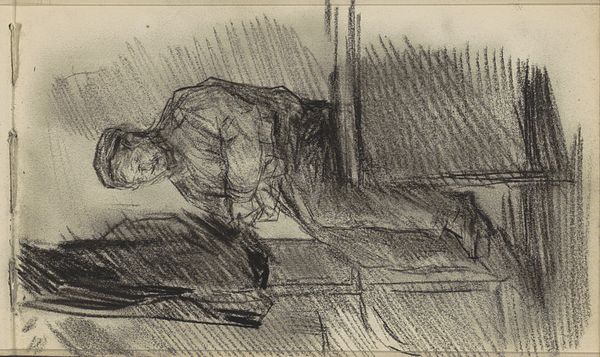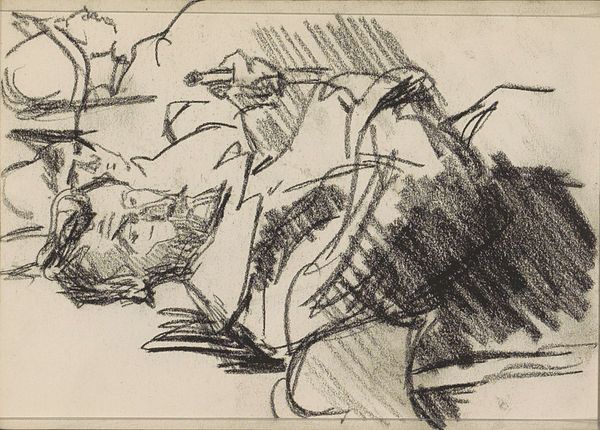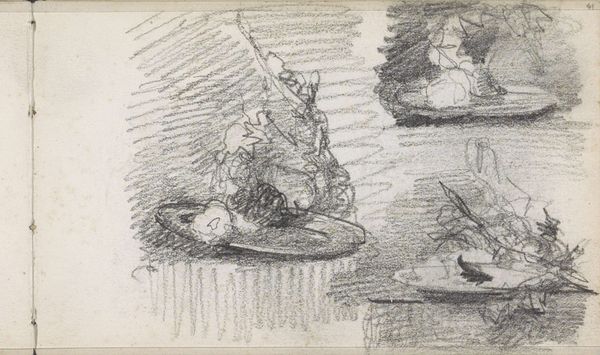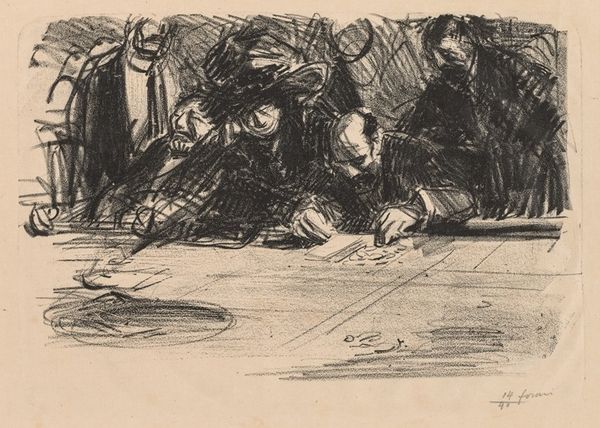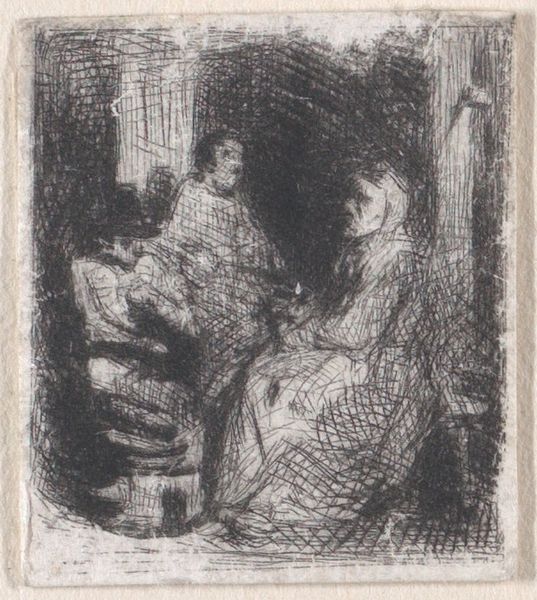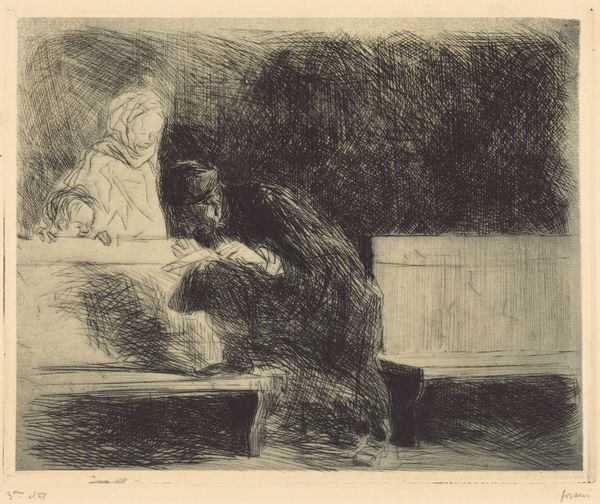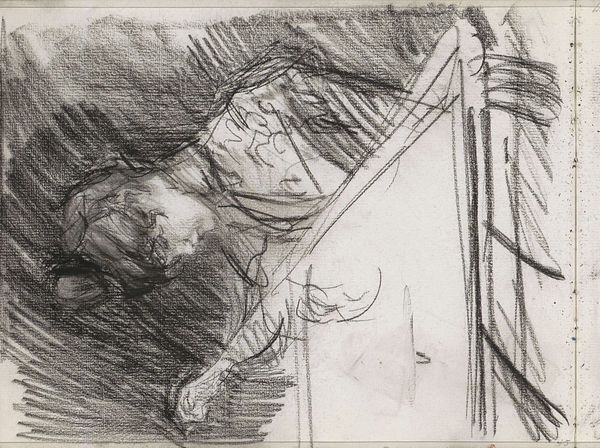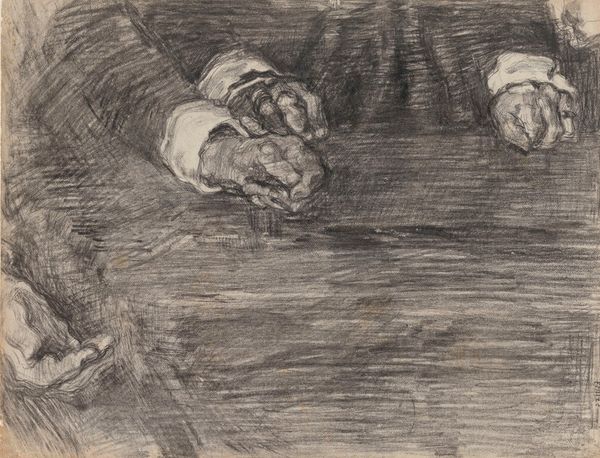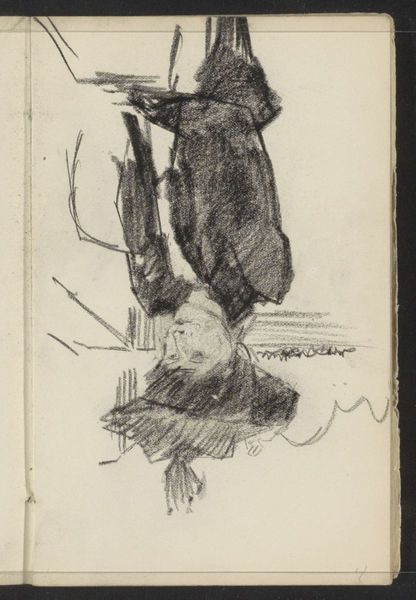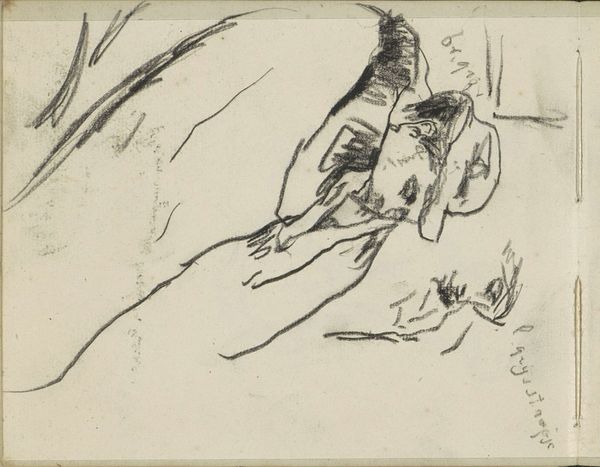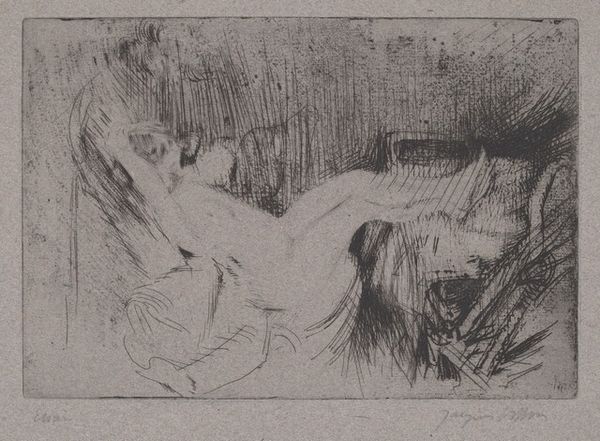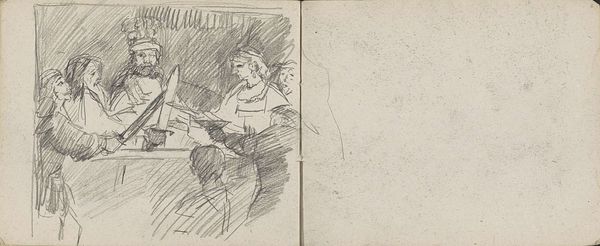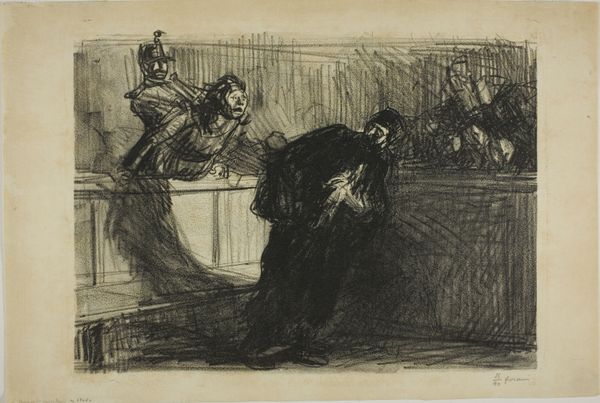
drawing, ink
#
drawing
#
dutch-golden-age
#
ink
#
geometric
#
realism
Copyright: Public domain
Curator: Vincent van Gogh's "Sculpture and Still Life with Cabbage and Clogs" from 1881, an ink drawing currently held at the Van Gogh Museum in Amsterdam, offers a raw and intimate look into the artist's early experimentation. Editor: It’s so somber, isn’t it? The harsh lines and contrasting darkness seem to speak of a deep pensiveness, maybe even a struggle. It looks nothing like the sunflowers he's remembered for. Curator: Indeed, it departs greatly from his later vibrant style, and that's exactly what makes it interesting. It reflects a period of immense socio-political tension, with the rise of industrialism deeply affecting peasant life. We need to understand what he’s reacting to, who is included and who is excluded, what realities he experienced while documenting still life during that period. Editor: So, how do these clogs and a simple cabbage factor into such societal shifts? I mean, what kind of statement can these simple items represent? Curator: These are symbols. The clogs point to the daily lives of the working class. These weren’t just shoes, they were an identity, tools for labor in fields. The cabbage similarly evokes the everyday struggles of the poor. In their raw and unglamorous presentation, there is a silent commentary on social inequality. The sketch is speaking to what the working class have, and it places it right alongside a sculpture, as if it is to be regarded equally. Editor: I see your point. I wonder about the placement, too – why this odd coupling of sculpted form and such humble, earthly objects? Was he trying to elevate the ordinary, give dignity to the overlooked? Curator: Precisely. Van Gogh aimed to confront the institutional norms of art by including ordinary objects in a similar, if not the same artistic style, that has often only served the rich and famous. He offers visibility and acknowledgement where these were formerly lacking. He encourages an intersectional perspective that blends class, labor, and the representation of self in art. Editor: So, even in these early, darker works, his core was already that of a rebellious spirit using his art to speak truth to power, wouldn't you agree? Curator: Absolutely. And these still lifes allowed him space to analyze not just the aesthetic form but the symbolic power of very common things in art and life, a reflection of ongoing political consciousness. Editor: Thank you. Now that I know more about the world in which this piece exists, the weightiness of this somber sketch is much more clear.
Comments
No comments
Be the first to comment and join the conversation on the ultimate creative platform.
